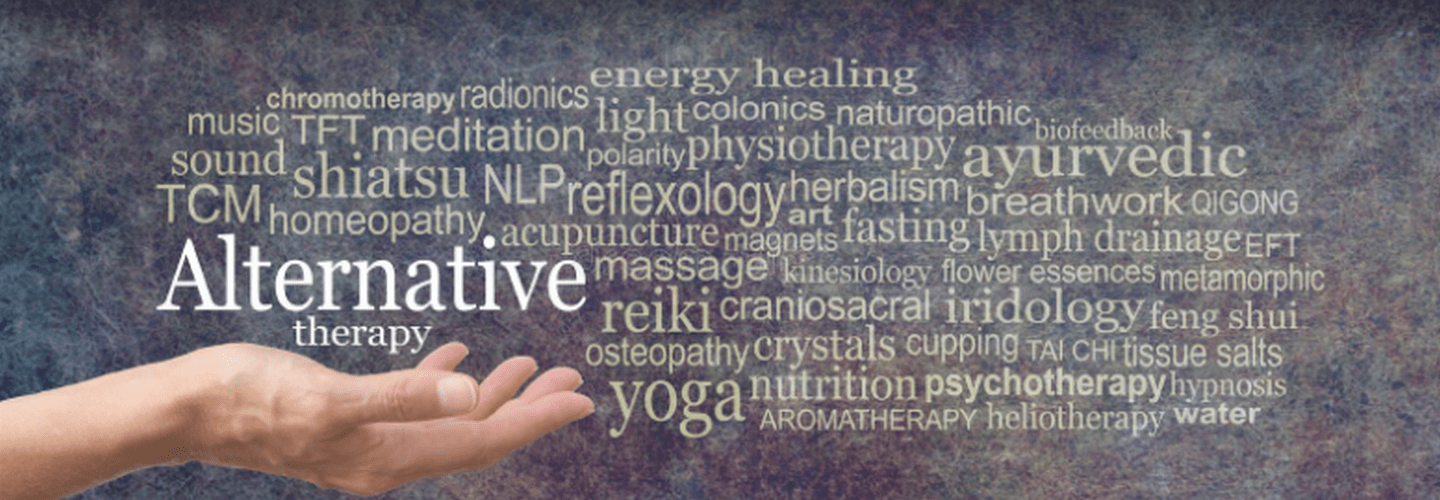
Picture starting the journey of childbirth equipped with the top 10 pain management strategies for success. From mastering breathing techniques to receiving the soothing touch of massage, each method holds the key to maneuvering through the intensity of labor with grace and resilience. These strategies not only offer physical relief but also nurture your emotional well-being, empowering you to face each contraction with strength and confidence. As you explore these avenues of support, you'll discover a holistic approach to pain management that can transform your childbirth experience into a truly empowering and transformative event.
Breathing Techniques
Mastering proper breathing techniques during childbirth can greatly enhance your pain management experience and overall success. The way you breathe directly impacts how you cope with the intensity of labor. By focusing on your breath, you can create a sense of calm and control in what may feel like a whirlwind of sensations.
When you feel a contraction starting, take a slow, deep breath in through your nose, filling your lungs completely. Then, exhale slowly through your mouth, imagining you're blowing out a candle. This rhythmic breathing helps to relax your body and release tension, making each surge more manageable. As you continue to breathe mindfully, you'll find yourself better able to ride the waves of discomfort with greater ease.
Positioning and Movement
You've got this!
Finding the right birthing position and keeping your body moving can help you navigate through the intensity of childbirth.
Embrace the power of movement and positioning to ease your discomfort and progress towards a successful birth experience.
Trust your instincts and listen to your body as you explore the best ways to adapt and find comfort during labor.
Optimal Birthing Positions
Choosing the appropriate birthing position can greatly impact your labor experience and help facilitate a smoother delivery process. Ideal birthing positions can aid in easing pain and promoting progress during childbirth.
Positions like standing, squatting, or using a birthing ball can help utilize gravity to assist in the descent of the baby through the birth canal. These positions can also help open up the pelvis, allowing more room for the baby to move downward.
Additionally, changing positions frequently can help relieve pressure and prevent fatigue. Remember, your comfort and ability to move freely are essential in finding the position that works best for you.
Trust your instincts and explore different options to discover the ideal birthing position for your unique labor journey.
Importance of Movement
Embracing movement throughout labor can enhance your birthing experience by promoting comfort, progress, and pain relief. Moving during labor helps your baby descend through the birth canal more easily and can reduce feelings of discomfort. Whether it's swaying, walking, or changing positions, the freedom to move empowers you in your birthing journey.
Movement also encourages ideal positioning of your baby for a smoother delivery. By staying active, you're actively participating in your labor, helping it progress efficiently. Remember, each movement you make brings you closer to meeting your little one.
Trust your instincts, listen to your body, and allow yourself the freedom to move as you see fit. Your body knows what it needs; let movement guide you towards a successful childbirth.
Hydrotherapy

Consider incorporating hydrotherapy into your pain management plan for a more soothing and effective childbirth experience. Hydrotherapy, which involves using water for pain relief and relaxation, can be a game-changer during labor. The warm water helps to ease muscle tension, promotes relaxation, and provides buoyancy that can make it easier to move and find comfortable positions.
Water has a unique way of enveloping you, creating a sense of weightlessness that can alleviate the pressure and intensity of contractions. Whether you choose to labor in a tub or under a shower, the soothing properties of water can help you cope with the challenges of childbirth in a gentle and calming manner.
The benefits of hydrotherapy extend beyond pain relief. Immersion in water can also boost your mood, reduce anxiety, and increase feelings of well-being. As you navigate the journey of childbirth, having a tool like hydrotherapy at your disposal can empower you to face each contraction with strength and grace.
Massage and Counterpressure
You've got this! Embrace the power of hands-on pain relief through massage and counterpressure techniques during childbirth.
Encourage your partner to actively participate in this process, providing you with the support and comfort you need to navigate through the intensity of labor.
Together, you can create a calming and empowering environment for a successful childbirth experience.
Hands-On Pain Relief
For effective pain relief during childbirth, incorporating hands-on techniques such as massage and counterpressure can greatly alleviate discomfort and promote relaxation. Here are four ways these methods can help you through the birthing process:
- Massage: Gentle rubbing or kneading of the lower back or shoulders can release tension and provide relief.
- Counterpressure: Applying firm pressure on specific points, like the lower back or hips, can reduce pain intensity.
- Focused Touch: Directing touch to areas experiencing the most pain can help distract your brain from the discomfort.
- Partner Involvement: Having a loved one provide hands-on support can create a sense of security and connection during labor.
Partner Involvement
Partner involvement in providing massage and counterpressure during childbirth can greatly enhance pain relief and emotional support for the laboring individual. Your partner's touch, applied with care and attentiveness, has the power to soothe your discomfort and provide a sense of grounding during this intense experience.
Encourage your partner to communicate with you, asking for feedback on the pressure and areas that bring the most relief. Together, you can find a rhythm that eases the intensity of contractions and fosters a deeper connection between you both. Remember, you're a team in this journey, and their involvement in offering massage and counterpressure can be an essential element in helping you navigate childbirth with strength and comfort.
Acupuncture and Acupressure

Acupuncture and acupressure techniques have shown promise in providing effective pain relief during childbirth. These alternative therapies can offer natural ways to manage discomfort and promote relaxation. Here are four compelling reasons to explore acupuncture and acupressure for pain management during labor:
- Natural Pain Relief: Acupuncture and acupressure stimulate specific points in the body to release endorphins, your body's natural painkillers. This can help ease the intensity of contractions and provide relief without the need for medications.
- Promotes Relaxation: By targeting key pressure points, these techniques can help you relax both physically and mentally. This relaxation response can reduce stress and anxiety, creating a more positive birthing experience.
- Enhances Labor Progress: Some studies suggest that acupuncture may help shorten the duration of labor by promoting ideal positioning of the baby and encouraging efficient contractions. This can potentially lead to a smoother delivery process.
- Supports Overall Well-being: Beyond pain management, acupuncture and acupressure can support your overall well-being during childbirth. They can help regulate energy flow, improve circulation, and enhance your body's natural ability to cope with the demands of labor.
Consider exploring acupuncture and acupressure as part of your pain management plan for childbirth to experience their potential benefits firsthand.
Hypnobirthing
Are you ready to discover the empowering benefits of Hypnobirthing for your childbirth journey?
By learning relaxation techniques, you can harness the power of your mind to navigate through labor with calmness and strength.
Benefits of Hypnobirthing
Discover the empowering benefits that come with practicing Hypnobirthing during your childbirth journey.
- Reduced Pain: Hypnobirthing techniques can help lower the perception of pain during labor.
- Increased Relaxation: By learning how to relax deeply, you can enhance your birthing experience.
- Improved Confidence: Hypnobirthing empowers you to trust in your body's ability to give birth.
- Better Birth Experience: Many mothers report feeling more in control and positive about their birthing process with the help of Hypnobirthing.
Hypnobirthing equips you with tools to navigate childbirth with calmness and confidence. Embrace the benefits of this practice as you prepare for one of the most miraculous moments of your life. Trust in your body, relax your mind, and welcome the journey ahead with positivity and strength.
Techniques for Relaxation
Enhance your birthing experience by mastering relaxation techniques through Hypnobirthing. In the midst of labor, finding moments of calm can make a significant difference in how you perceive and manage pain. Hypnobirthing teaches you to enter a state of deep relaxation through controlled breathing, visualization, and positive affirmations.
By practicing these techniques leading up to childbirth, you can condition your mind and body to remain relaxed even during intense contractions. Imagine yourself surrounded by a sense of peace and serenity, allowing your muscles to loosen and your mind to focus on the birth of your baby.
Embrace the power within you to stay centered and in control, creating a more positive and empowering birthing experience.
Partner Involvement Importance
Engage your partner actively in the Hypnobirthing process to strengthen your bond and enhance your birthing journey together. Partner involvement is essential for creating a supportive and calming environment during labor.
Here are four ways your partner can actively participate in the Hypnobirthing experience:
- Practice Hypnobirthing Techniques Together: Work on relaxation exercises as a team to synchronize your breathing and promote a sense of unity.
- Attend Hypnobirthing Classes: Join classes together to learn about the techniques and principles of Hypnobirthing, fostering a shared understanding.
- Create a Relaxing Birth Environment: Collaborate on setting up a calming space with dim lighting, soothing music, and comfortable amenities.
- Provide Emotional Support: Offer constant encouragement, affirmations, and reassurance throughout the birthing process to help you stay focused and relaxed.
TENS Machine
Consider using a TENS machine to help manage your childbirth pain effectively. A TENS (Transcutaneous Electrical Nerve Stimulation) machine works by sending small electrical pulses through pads placed on your skin, which can help block pain signals from reaching your brain. This non-invasive method is safe to use during labor and can provide a natural pain relief option that many women find beneficial.
Using a TENS machine during childbirth can offer you a sense of control over your pain management. You can adjust the intensity of the electrical pulses to suit your comfort level, giving you the power to tailor the experience to your needs. This device can be particularly useful during the early stages of labor when you may not yet be ready for other forms of pain relief.
One of the advantages of using a TENS machine is that it's drug-free, which can be appealing if you prefer to avoid medications during labor. Additionally, the portability of the device allows you to move around freely and change positions as needed, promoting comfort and relaxation during contractions.
Medication Options

When exploring pain management options for childbirth, understanding the available medication choices can provide you with valuable insights into enhancing your comfort during labor. Medications can play an essential role in helping you manage the intensity of labor pain, allowing you to focus on the beautiful journey of bringing new life into the world.
Here are four medication options that you may consider for pain relief during childbirth:
- Epidural: An epidural is a common choice for pain relief during labor. It involves injecting pain medication near the spinal cord, providing effective and continuous relief while allowing you to remain awake and alert.
- Nitrous Oxide: Also known as laughing gas, nitrous oxide is a fast-acting gas that you inhale during contractions to help take the edge off the pain. It's safe for both you and your baby and can be self-administered, giving you control over your pain relief.
- Opioids: Opioid medications like morphine or fentanyl are sometimes used to provide short-term pain relief during labor. They can be administered through an IV or injection, offering temporary relief from intense contractions.
- Pudendal Block: This type of local anesthetic is injected into the vaginal wall or perineum to numb the lower pelvic area, particularly helpful during the pushing stage of labor. It can provide targeted pain relief while allowing you to remain mobile and actively participate in the birthing process.
Emotional Support
Providing emotional support during childbirth is essential for creating a positive and empowering experience for you and your birthing partner. The journey of childbirth can be filled with a wide range of emotions, from excitement and joy to anxiety and fear. Your birthing partner plays an important role in offering you unwavering emotional support throughout this transformative experience. Their presence, encouragement, and understanding can greatly impact how you perceive and manage the intensity of labor pains.
As you navigate through the waves of contractions, having someone by your side who can hold your hand, offer soothing words, and provide reassurance can make a world of difference. Your birthing partner's ability to empathize with your feelings, listen attentively to your needs, and stay calm in the face of challenges can help create a sense of safety and security during labor.
Relaxation Techniques

Moving through the intensity of labor pains, finding effective relaxation techniques can greatly aid in managing the discomfort and promoting a more positive birthing experience. Here are four powerful relaxation techniques to help you navigate through the challenges of childbirth:
- Deep Breathing: Practice slow, deep breathing to calm your mind and body. Inhale deeply through your nose, feeling your abdomen rise, then exhale slowly through your mouth, releasing tension with each breath.
- Visualization: Create a mental image of a peaceful place or a positive outcome. Visualizing serene scenes or imagining your baby in your arms can help distract from pain and induce relaxation.
- Progressive Muscle Relaxation: Tense and release each muscle group in your body, starting from your toes and working your way up to your head. This technique helps release physical tension and promotes overall relaxation.
- Guided Meditation: Listen to soothing guided meditations designed for childbirth. These recordings often include affirmations, calming music, and visualizations to guide you through labor with a sense of calm and confidence.
Frequently Asked Questions
Can Partners Actively Participate in Pain Management Techniques?
Yes, partners can actively participate in pain management techniques during childbirth. Your presence, support, and involvement can make a significant difference in the birthing experience. Encouraging relaxation techniques, providing physical comfort, and offering words of affirmation can help the birthing person cope with pain.
Are There Special Considerations for High-Risk Pregnancies?
During a high-risk pregnancy, it's essential to have open communication with your healthcare provider. They'll guide you on specific considerations tailored to your situation, ensuring the best care for you and your baby.
Follow their advice diligently and attend all recommended appointments. Your well-being and that of your little one are the top priorities, so trust in the expertise of your medical team to navigate this journey with you.
How Can I Prepare a Birth Plan That Includes Pain Management?
When preparing your birth plan, focus on outlining your preferences for pain management during childbirth. Consult with your healthcare provider to explore options such as epidurals, breathing techniques, or hydrotherapy.
Consider including relaxation methods, music, or massage in your plan. Be open to adjustments during labor and trust your instincts.
What Are the Potential Side Effects of Different Pain Relief Methods?
When exploring pain relief methods during childbirth, it's crucial to contemplate potential side effects. Each option, from medication to natural techniques, may have its own set of effects. Discussing these with your healthcare provider can help you make informed decisions.
Are There Alternative Pain Management Options for Natural Childbirth?
When considering alternative pain management options for natural childbirth, you can explore techniques like:
- Mindfulness
- Breathing exercises
- Hydrotherapy
- Using a birthing ball
These methods can empower you to connect with your body and manage discomfort in a holistic way.
Remember, every woman's journey is unique, so don't hesitate to discuss these options with your healthcare provider to find what works best for you during this special time.
Trust in your body's strength and resilience.
Conclusion
You've learned the top 10 pain management strategies for a successful childbirth journey.
Did you know that studies show that women who use breathing techniques during labor experience reduced pain levels by up to 50%?
Remember, you have the power to create a positive and empowering birth experience with the right tools and support.
Trust in yourself and your body, and know that you're capable of overcoming any challenge that comes your way.
You've got this!





